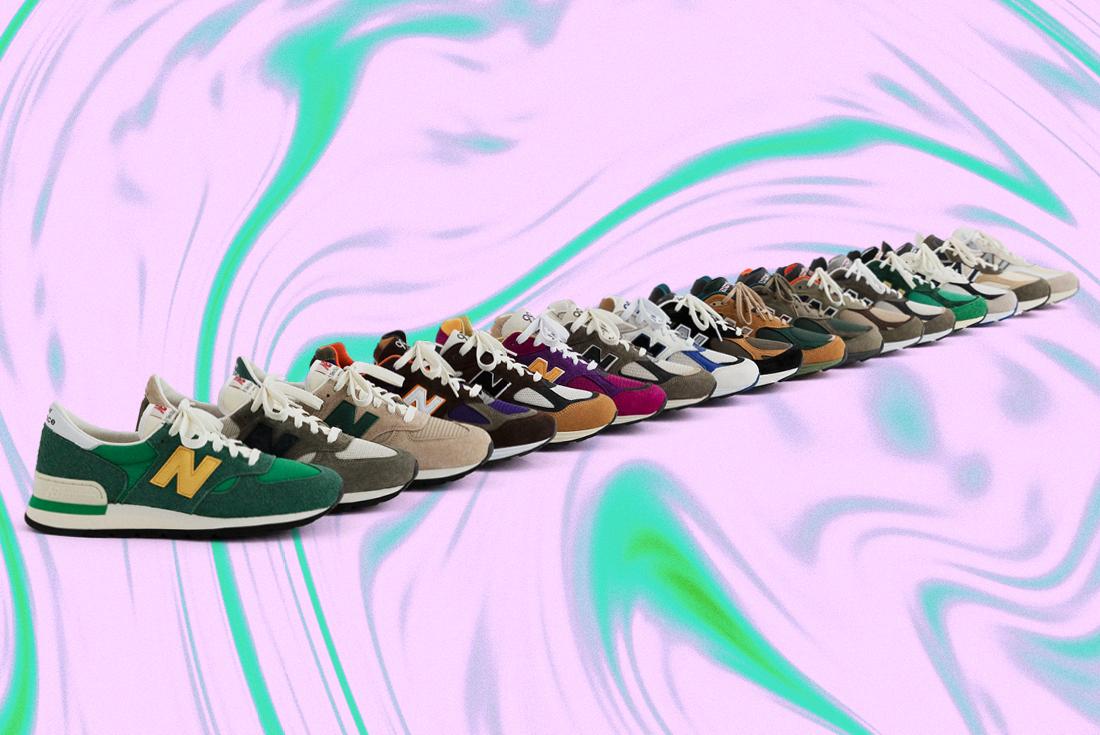Teddy, Kiko, and Salehe Are Changing Sneaker Collaborations for the Better
It’s an existential time to be a sneakerhead, and navigating sneaker culture has never been more challenging. NFT sneakers are on the rise, the market is more saturated with collaborations than ever, new technologies are emerging, Crocs are somehow popular, and all the while, the world is burning.
To wrap up the year, we address four key themes to answer the question: What does it mean to be a sneakerhead these days?
For part one, let’s dive into the state of collaborations.
In 1996, two years after founder James Jebbia secured a storefront at 274 Lafayette in New York City’s SoHo district, the brand introduced its very first collaboration.
In the years prior, Supreme’s shelves had been stocked with a mixture of limited, in-house product, plus offerings from other reputable skate brands like Independent, Zoo York and Spitfire. Naturally, footwear is an important article of skateboard equipment, so Jebbia started to think about making shoes for Supreme as well. At the time, had gained considerable clout in skate circles on the West Coast, and Supreme were not yet capable of producing their own footwear, so Jebbia reached out to the Anaheim-based brand.
This pragmatic sentiment was behind many of the first sneaker collaborations that have shaped the industry today.

In recent years, collaborations have been a tool for brands to cross-pollinate between industries or across categories. In some cases, they’re more a marketing strategy than a creative decision, but either way, the state of collaborations has changed a lot since 1996.
The landscape is looking pretty interesting in 2022, and three names continue to have a huge impact on how brands look at sneaker collaborations: , , and .
Bembury, speaking with Fast Company earlier in 2022, summarised this shift succinctly by saying, ‘Kanye left Nike because they wouldn’t give him royalties, and the fact that I now receive them from multiple companies shows how the space has evolved.’
The times they are a-changin’.

Bembury cut his teeth at Payless shoes before moving to and then transitioning to in 2015. The first project to bear Bembury’s name in a significant way was the 2017 Chain Reaction sneaker, which debuted alongside 2Chainz. In the last couple of years, Bembury’s collaborations alongside New Balance and Crocs have made him a fixture in sneakerhead conversations. And while his design aesthetic is certainly fascinating, what’s happening behind the scenes is equally noteworthy.
Traditionally, an independent creative collaborating with a global brand would receive a one-time fee not tied to any performance metrics. Bembury’s deals are different because he receives a percentage of sales. In general, this kind of contractually assured equity is a huge step forward for representation, and it’s a sign that the industry is shifting.

Bulgarian designer Kiko Kostadinov first collaborated with in 2017. After a strong run of colour makeups and exclusive models, ASICS and Kostadinov took their relationship a step further when the Japanese brand brought on the designer in an integrated design role. In a statement, Kostadinov noted the partnership ‘will allow us to integrate deeper within the ASICS brand, beyond relying on yesterday’s models of collaboration – affording us the space to approach our work through a more considered filter, with an eye towards tomorrow.’
The co-authored collaboration will see Kostadinov and his close associates Laura Fanning and Deanna Fanning curating around ten ASICS Sportstyle models per season.
Stateside, also invited designer Teddy Santis to head up the brand’s Made-in-USA product. Best known as the man behind the grown-streetwear aesthetic of , Santis was brought on as creative director of the US-made collection of New Balance, and so far, he’s re-worked models across the 990 range, introduced Made-in-USA apparel, and seemingly kicked things off to a good start.
These deals mean Kiko, Salehe, and Teddy are getting a real piece of the sneaker pie, signalling a positive change for the industry with sportswear brands recognising the importance of partners and collaborators who move the needle. Ultimately, this shift is good for everyone, as designers get the credit (and cash) they deserve, and brands can build real, meaningful inroads with creatives and their communities.
